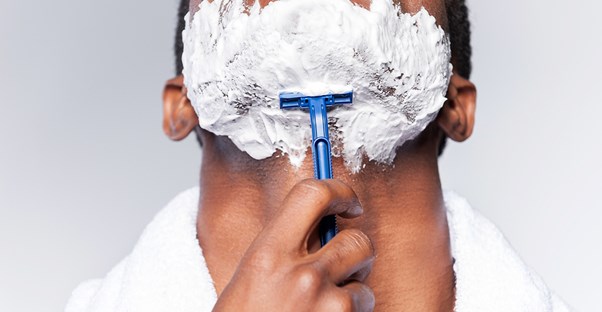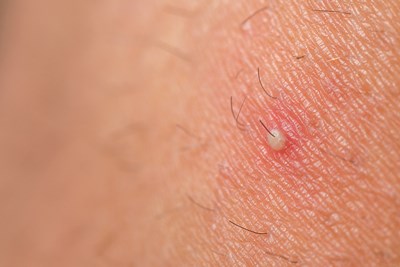Ingrown hairs are a very common condition that typically develops after shaving, tweezing, or waxing. Also known as razor burn, ingrown hairs are most commonly found on the neck and face of men after shaving their face. However, they are also found on the armpits, bikini area, and legs of women as well. While most ingrown hairs don’t require any treatment and will clear up on their own within a few days, it is possible for further complications to occur. Here are some of the dangers to be aware of when you have an ingrown hair.
Hyperpigmentation
It is common for people who have chronic ingrown hairs to develop hyperpigmentation, or darkening of the skin, around the areas where the ingrown hairs develop. Though this is usually a harmless condition, it can be embarrassing if the dark patches are developing in areas such as your face. To prevent this from occurring, see your doctor if you are getting ingrown hairs very frequently. There are some medication and other treatments that can help to prevent ingrown hairs from occurring.
Keloids
A keloid is an area of irregular fibrous tissue that is formed at the site of a scar or an injury. Keloids are usually raised from the area where a sore or injury has healed. It is possible to develop keloids in areas where ingrown hairs have healed. This is also not dangerous, but it can be frustrating if you are especially prone to developing ingrown hairs. To avoid this, try some different methods of shaving and waxing that will help to prevent ingrown hairs from occurring.
Bacterial Infection
It is common for the razor burn that comes with ingrown hairs to cause itching and irritation. While it may be tempting to scratch the area for relief, try to refrain from this as much as possible, as breaking the skin can lead to minor bacterial infections developing. If this happens, you will need to see the doctor so you can get some prescription antibiotics.
It is also possible for more serious bacterial infections to develop, such as staphylococcus aureus, which can be deadly without treatment. Staph infections are more likely to occur if you try to use tweezers or another tool to remove the ingrown hair yourself. Since most ingrown hairs are able to resolve on their own, when you try to take matters in your own hands, all you are doing is irritating and inflaming the area even more, and making the site more susceptible to bacteria such as staph.
The symptoms of staph infection include a large knot under the skin, skin that is hot to the touch, and immense pain. It is also possible for pus to ooze from the site of the ingrown hair. If you begin to experience any of these symptoms, you will need to seek medical attention as soon as possible so the sore can be drained and you can begin a round of strong antibiotics to destroy the infection. Left untreated, staph infections can spread to your bloodstream and lead to sepsis, which can be fatal.




